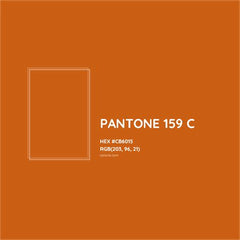Your cart is empty now.

Copyright vs Trademark - uses and coverage, enforcement, squatters
- 14 June, 2024
- Nyall Engfield
Copyright vs Trademark - uses and coverage, enforcement, squatters
Copyrights and trademarks are two important forms of intellectual property protection that serve distinct purposes. While both provide legal rights to owners, they protect different types of creative works and have unique characteristics. Understanding the differences between copyrights and trademarks is crucial for creators, businesses, and individuals seeking to safeguard their valuable intellectual assets.
What is Copyright?
Copyright is a form of legal protection granted to original works of authorship fixed in a tangible medium of expression. It automatically protects a wide range of creative works, including literary works, musical compositions, dramatic works, pantomimes and choreographic works, pictorial, graphic, and sculptural works, motion pictures and other audiovisual works, sound recordings, and architectural works. Copyright protection arises automatically the moment a work is created and fixed in a tangible form. While registration with the U.S. Copyright Office is not required for protection, it provides several important benefits, such as the ability to sue for infringement and the presumption of validity in court. The primary rights granted by copyright are the exclusive rights to reproduce the work, prepare derivative works, distribute copies, perform the work publicly, and display the work publicly. Copyright owners can license or assign these rights to others. The duration of copyright protection is generally the life of the author plus 70 years.
What is a Trademark?
A trademark is a word, phrase, symbol, design, or combination thereof that identifies and distinguishes the source of goods or services in the marketplace. Trademarks protect brand names, logos, slogans, and other distinctive elements that help consumers identify the origin of products. Service marks are essentially the same as trademarks but specifically identify and distinguish the source of services rather than goods. Trademark rights arise from actual use of the mark in commerce in connection with goods or services. While registration with the U.S. Patent and Trademark Office (USPTO) is not mandatory, it provides significant advantages, such as nationwide protection, a legal presumption of ownership, the right to use the ® symbol, and enhanced remedies against infringers. The purpose of trademark law is to prevent consumer confusion and protect the goodwill and reputation of businesses. Trademarks can potentially last indefinitely, as long as the owner continues to use the mark in commerce and properly maintains and renews the registration.
Key Differences Between Copyrights and Trademarks
Subject Matter:
- Copyrights protect original works of authorship, such as books, music, art, and software code.
- Trademarks protect words, phrases, symbols, or designs that identify the source of goods or services.
Rights Conferred:
- Copyrights provide the exclusive right to reproduce, distribute, perform, display, and create derivatives of the work.
- Trademarks provide the exclusive right to use the mark in commerce in connection with the specified goods or services.
Duration:
- Copyrights generally last for the life of the author plus 70 years.
- Trademarks can potentially last indefinitely with proper use and renewal.
Registration:
- Copyright registration is optional but provides important benefits. Protection arises automatically upon creation.
- Trademark registration is not mandatory but provides significant advantages. Rights arise from use in commerce.
Purpose:
- The purpose of copyright is to encourage the creation of original works by granting exclusive rights to authors.
- The purpose of trademark is to prevent consumer confusion and protect the goodwill of businesses.
When to Use Copyright vs. Trademark
Copyright is appropriate for protecting original creative expressions, such as books, articles, music, photographs, videos, and artwork. If you have created an original work and want to control its reproduction, distribution, and adaptation, copyright is the suitable form of protection.
Trademark is appropriate for protecting brand names, logos, slogans, and other distinctive elements that identify the source of goods or services. If you are using a unique mark to distinguish your products or services in the marketplace and want to prevent others from using confusingly similar marks, trademark protection is essential.
In some cases, a work may be eligible for both copyright and trademark protection. For example, a logo design may be protected by copyright as an original artistic work and also function as a trademark identifying the source of goods or services. It's important to assess the nature and intended use of your intellectual property to determine the most appropriate form(s) of protection.
Enforcement of Copyrights and Trademarks
Enforcing copyrights involves taking action against unauthorized use, reproduction, distribution, or adaptation of the protected work. Copyright owners can send cease and desist letters, file lawsuits in federal court, and seek remedies such as injunctions, damages, and attorney's fees. To succeed in a copyright infringement claim, the owner must prove ownership of a valid copyright and unauthorized copying by the defendant.
Enforcing trademarks involves taking action against unauthorized use of confusingly similar marks in commerce. Trademark owners can send cease and desist letters, oppose or cancel confusingly similar trademark applications or registrations, and file lawsuits in federal court. Remedies may include injunctions, damages, profits, and destruction of infringing goods. To prevail in a trademark infringement claim, the owner must prove likelihood of confusion among consumers.
Both copyright and trademark infringement can also be addressed through online platforms' takedown procedures, such as the Digital Millennium Copyright Act (DMCA) for copyrights and various platform-specific trademark complaint processes.
Copyright and Trademark Squatting
Squatting refers to the practice of registering or using intellectual property rights in bad faith, often with the intent to profit from the goodwill or reputation of another party.
Copyright squatting is less common than trademark squatting due to the automatic nature of copyright protection. However, it can occur when someone registers a copyright for a work they did not create, intending to assert rights against the true owner or extract payment. Combating copyright squatting typically involves proving prior creation and ownership of the work.
Trademark squatting is more prevalent and occurs when someone registers a trademark that is identical or confusingly similar to an existing unregistered trademark, often in a different country. Squatters may seek to sell the registration to the legitimate owner at an inflated price or use it to market counterfeit goods. Preventing trademark squatting requires proactive registration in relevant markets and diligent monitoring for infringing uses.
Strategies to prevent squatting include:
- Conducting comprehensive searches before adopting and using a mark
- Registering copyrights and trademarks promptly in all relevant jurisdictions
- Monitoring for infringing uses and taking swift enforcement action
- Implementing strong intellectual property policies and contracts with employees and partners
- Engaging experienced intellectual property counsel to develop a protection strategy
Conclusion
In summary, copyrights and trademarks are distinct forms of intellectual property protection serving different purposes. Copyrights protect original works of authorship, while trademarks protect brand identities and prevent consumer confusion. Understanding the differences between copyrights and trademarks, their scope of protection, and enforcement mechanisms is crucial for effectively safeguarding your intellectual property assets. By taking proactive measures and working with knowledgeable professionals, creators and businesses can secure their rights, combat infringement, and maximize the value of their copyrights and trademarks in an increasingly competitive marketplace
Search
Archive
- August 2024
-
- How to avoid being locked out of your Amazon product listings
- If you tattoo a trademark on your body - Skinvertising- can you be sued?
- Burnt Orange - University of Texas Trademark of Pantone 159
- Jungle Superheroes - famous characters similar to Tarzan and the difficulties of maintaining a monopoly
- What happens to the trademark rights if the renewal is missed



